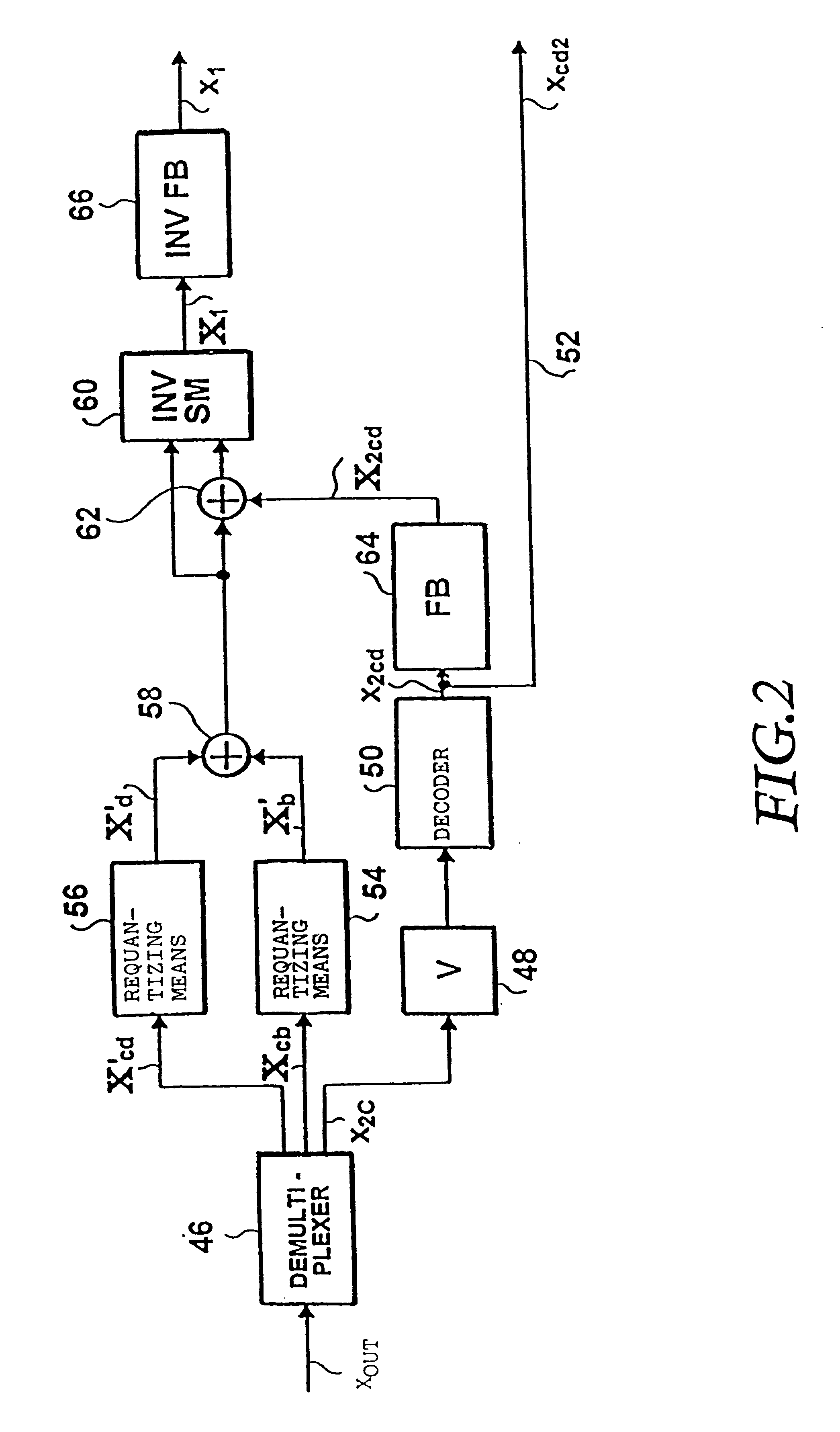Frequency-domain scalable coding without upsampling filters
a frequency domain and filter technology, applied in the field of scalable audio coders, can solve the problems of low calculating expenditure and fast operation
- Summary
- Abstract
- Description
- Claims
- Application Information
AI Technical Summary
Benefits of technology
Problems solved by technology
Method used
Image
Examples
Embodiment Construction
FIG. 1 shows a principle block diagram of an apparatus for coding a time-discrete signal (of a scalable audio coder) according to the present invention. A discrete time signal x.sub.1, sampled with a first sampling rate, e.g. 48 kHz, is brought to a second sampling rate, e.g. 8 kHz, by means of a downsampling filter 12, with the second sampling rate being lower than the first sampling rate. The first and second sampling rates preferably constitute a ratio of an integer. The output signal of the downsampling filter 12, which may be implemented as an decimation filter, is input to a coder / decoder 14 coding its input signal in accordance with a first coding algorithm. As was already mentioned, the coder / decoder 14 may be a speech coder of lower order, such as e.g. a coder G.729, G.723, FS1016, MPEG-4, CELP etc. Such coders operate with data rates from 4.8 kilobit per second (FS1016) to data rates of 8 kilobit per second (G.729). All of them process signals that have been sampled at a s...
PUM
 Login to View More
Login to View More Abstract
Description
Claims
Application Information
 Login to View More
Login to View More - R&D
- Intellectual Property
- Life Sciences
- Materials
- Tech Scout
- Unparalleled Data Quality
- Higher Quality Content
- 60% Fewer Hallucinations
Browse by: Latest US Patents, China's latest patents, Technical Efficacy Thesaurus, Application Domain, Technology Topic, Popular Technical Reports.
© 2025 PatSnap. All rights reserved.Legal|Privacy policy|Modern Slavery Act Transparency Statement|Sitemap|About US| Contact US: help@patsnap.com



